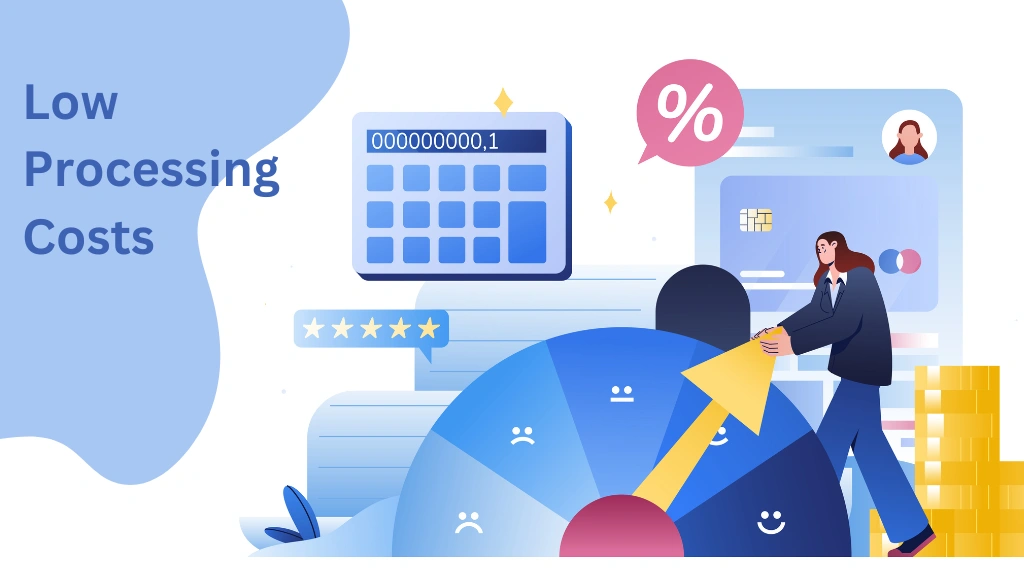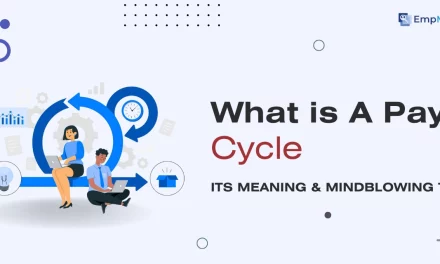Employers continuously seek innovative strategies to attract and retain top talent. Which is why selecting the best payroll schedule for your company can lead to cost savings and enhanced employee satisfaction.
Especially during the payroll period, it becomes difficult for managers to keep track and manage employees’ work-time and attendance together. And that way many organizations invest in HRMs and payroll management software to overcome this issue.
Another way to overcome this issue is by shifting the payroll cycle from monthly to semi monthly pay. Many organizations prefer semimonthly payroll due to its ability to reduce accounting expenses and simplify employee deductions.
This system helps employees manage their monthly financial obligations more effectively by providing regular, evenly-spaced paychecks. This trend is not merely a passing fad but a strategic move that offers compelling benefits for both employers and employees.
In this article, we explore semi monthly payroll, compare it with other payment schedules, and offer guidance on choosing a payroll system that meets your business needs.
Let us begin by analyzing what pay period is.
Listen To The Podcast Now!
What Is A Pay Period?
A pay period is the specific time frame during which an employee’s work hours are tracked and for which they receive payment. Common pay periods include weekly, biweekly, semimonthly, and monthly. At the end of each pay period, employers calculate the wages earned and issue paychecks or direct deposits to employees.
This schedule helps both employers and employees manage financial planning and budgeting effectively.
For employers, it streamlines payroll processing and helps them maintain accurate financial records, ultimately fostering a positive workplace culture and contributing to overall operational efficiency.
Managing employee payroll can often be challenging. However, with effective employee work time tracking and management software like EmpMonitor, the process becomes much simpler. EmpMonitor is a highly efficient tool designed to track employee work hours, minimizing complications associated with payroll processing. By providing accurate and real-time data, it streamlines payroll management and ensures a smooth experience for both employers and employees.
Let us now go through what semimonthly payroll is.
What Is Semi Monthly Pay?
A semi monthly pay is a pay schedule where employees receive their wages twice a month, typically on specific dates, such as the 1st and 15th or the 15th and 30th. It means employees are paid 24 times a year.
A semi monthly pay schedule provides employees with two paychecks each month. One paycheck is typically issued in the middle of the month, while the other comes at the end of the month or the beginning of the next. Most companies issue pay on the 1st and 15th or the 15th and last day of the month.
With this schedule, you receive 24 paychecks per year. Since months vary in length, some pay periods are shorter, like in February, where the second paycheck covers only 13 or 14 days. However, salaried employees often receive equal payments, with their yearly salary divided evenly over 24 checks.
This type of semi monthly pay is common in many industries and helps employees plan their finances more predictably. Other types of payment schedules exist that are used by industries. Let us learn about them.
Other Types Of Payment Schedules:
In addition to semi monthly payroll, there are three other common types of payment schedules:
Weekly:
A weekly payroll schedule means employees are paid once every week on a set day, typically resulting in 52 paychecks each year. Friday is often chosen as a payday. Industries like construction, manufacturing, food service, mining, and natural resources commonly use this schedule, as workers in these sectors may have variable hours, face weather-related disruptions, or work overtime.
Overtime is easy to track with a weekly schedule since the pay period aligns with the workweek. This makes it simple for employees to see their regular and overtime pay. A weekly payroll is more beneficial than a semi monthly payroll for employees with tighter budgets, as it provides more frequent payments, allowing them to manage their finances more easily and address immediate expenses.
However, it requires more effort for accounting staff, as taxes, benefits, and overtime must be calculated every week, making it the most expensive payroll schedule to maintain. Paychecks are smaller, but more frequent.
Biweekly:
With a biweekly payroll schedule, employees are paid every two weeks, resulting in 26 paychecks per year. This method is popular because it simplifies paycheck calculations, particularly for hourly workers, who can quickly receive overtime pay.
Biweekly payroll is slightly more expensive to process than monthly or semimonthly schedules because it involves more pay periods. Additionally, businesses need to budget carefully since there are two months each year where employees receive three paychecks. Employees must also manage automatic payments, as paycheck dates vary throughout the month.
Monthly:
In addition to a semi monthly pay roll, a monthly payroll schedule means employees are paid once a month, usually on a fixed date, resulting in 12 paychecks per year. This is the least common payroll schedule, mainly used by financial service companies or for high-salaried employees.
Because there are only 12 paychecks per year, monthly payroll has the lowest processing costs and requires less effort from accounting teams. Payroll dates also align with monthly taxes and benefit payments. However, employees may find it difficult to budget with only one paycheck per month. Some states even restrict the use of monthly pay schedules, particularly for hourly or lower-wage workers, due to its potential financial strain.
Now that we’ve explored the various types of payroll schedules, let’s take a closer look at the advantages of semi monthly pay and why it is becoming popular among employers.
Benefits Of Semi-Monthly Payroll:
A semimonthly pay schedule offers several advantages for both businesses and employees, including:
Predictability:
Employees on a semi monthly pay schedule receive two paychecks each month—one in the middle and one at the end. This regular payment system provides consistency, helping employees manage their finances more easily.
Knowing when they will be paid allows them to plan for monthly expenses such as rent and bills, making budgeting more straightforward and reducing financial uncertainty.
Cost-Efficiency:
A semimonthly payroll schedule requires businesses to process payroll only twice a month, reducing administrative effort and costs. This increases efficiency, allowing HR teams to manage payroll with less time and resources.
As a result, HR staff can focus on other important tasks, such as employee development, recruitment, and improving overall business operations.
Consistent Pay Dates:
In a semimonthly payroll system, paychecks are issued on the same dates each month, offering employees a reliable payment schedule. This consistency helps employees plan for regular expenses, such as rent, credit card payments, and bills, more easily. Employees can better manage their finances and avoid unexpected payment issues by knowing exactly when they’ll be paid.
Larger Paychecks:
In a semi monthly pay schedule, each paycheck is generally larger than those in weekly or biweekly schedules because the annual salary is divided into fewer payments—only 24 each year. This results in higher individual paychecks compared to a biweekly schedule, which provides 26 checks annually. Consequently, employees receive a more substantial amount with each semimonthly paycheck.
Lower Processing Costs:
A semimonthly payroll system involves processing fewer paychecks than weekly or biweekly schedules, resulting in time and resource savings for the accounting department.
This approach simplifies payroll management since each pay period aligns with the calendar month, eliminating the need to carry over hours or resolve discrepancies between periods. This efficiency enhances the overall payroll process.
Easier Deductions Management:
In a semi monthly pay roll system, retirement contributions, medical benefits, and other deductions are managed more easily with two equal paychecks each month. This regularity allows employees and accounting staff to track deductions accurately throughout the year.
With consistent amounts deducted from each paycheck, monitoring contributions and understanding total benefits becomes straightforward and efficient for everyone involved.
Managing pay deductions can often be complex and challenging. Utilizing employee management software can greatly alleviate these difficulties. EmpMonitor is an effective solution that simplifies employee management and tracking.
This tool allows employers to monitor each employee’s work hours and performance, reducing confusion related to paychecks. By providing accurate data, EmpMonitor helps streamline the payroll process and ensures clarity in pay deductions.
Let’s explore how this tool can benefit employers by enhancing employee management and streamlining payroll processes.
EmpMonitor- Seamless Payroll With Employee Management Software
EmpMonitor is a comprehensive employee management software designed to streamline workforce tracking and payroll processes. It accurately monitors employee work hours, attendance, and productivity, providing employers with real-time insights into their team’s performance. Integrated within the HR Software ecosystem, it supports seamless payroll automation, accurate deductions, and better compliance with company and labor policies.
For employers, EmpMonitor enhances payroll management by reducing errors and administrative workload. By providing accurate data, it enables timely payroll processing and minimizes confusion around paychecks, ultimately leading to improved employee satisfaction and operational efficiency.
EmpMonitor offers several features that enhance payroll management for employees:
Time Tracking:
EmpMonitor provides accurate tracking of employee hours, including regular and overtime hours. This ensures precise payroll calculations based on actual work time.
Attendance Monitoring:
The platform allows employers to track attendance patterns, helping to identify trends in absenteeism and punctuality, which can impact payroll.
Performance Metrics:
By monitoring productivity and performance, EmpMonitor can help employers assess employee contributions, aiding in fair compensation and bonus decisions.
Integration with Payroll Systems:
EmpMonitor can seamlessly integrate with existing payroll software, simplifying data transfer and reducing manual entry errors.
Detailed Reporting:
The tool generates comprehensive reports on employee hours, attendance, and productivity, providing insights that can improve semi monthly payroll accuracy and efficiency, which can also be summarized in an online newsletter for management updates.
Real-Time Data Access:
Employers have access to real-time data, allowing for quick adjustments and ensuring timely payroll processing.
Compliance Tracking:
EmpMonitor helps businesses comply with labor laws and regulations by providing necessary data related to hours worked and employee status, reducing the risk of legal issues.
By leveraging these features, EmpMonitor streamlines payroll management, ensuring accuracy and efficiency while providing valuable insights for better decision-making.
Now, let’s review some key tips for selecting an appropriate payroll schedule.
Also Read:
What Is Biweekly Pay & How To Calculate It?
How To Manage Time Off Requests For Payday + Template Format
Biweekly Vs Semi Monthly: Which One Works Better For You?
Guidelines For Selecting A Payroll Schedule
There are specific guidelines to consider when selecting the most suitable payroll schedule for your company. Let’s explore these important factors.
Understand State Regulations:
Most states, excluding Alabama, Florida, and South Carolina, have regulations regarding pay frequency, establishing a minimum allowable pay frequency while allowing employers to pay more frequently.
Some states have different requirements based on occupation. For example, Nevada permits monthly pay for executive, professional, and administrative employees, while all other employees must have at least a semi monthly pay.
In New York, manual workers must receive weekly pay, while clerical workers can be paid semimonthly. Additionally, states like Maine and Arizona do not allow pay periods longer than 16 days.
Consider The Wage Structure Of Your Employees:
When determining a payroll structure, it is essential to compare the number of salaried employees versus hourly employees. Companies with a significant number of hourly workers may find a weekly or biweekly pay schedule more advantageous.
Conversely, if your organization primarily employs salaried personnel, a biweekly, semimonthly, or even monthly payroll schedule might be appropriate.
Additionally, it is possible to implement different pay schedules for various employee classifications, such as using a biweekly schedule for hourly employees and a semi monthly pay schedule for salaried staff.
Operate Within The Limits Of Your Payroll Budget And Available Resources:
Calculating payroll and issuing checks demand significant employee time and resources. To minimize the time spent on calculating overtime, benefits, taxes, and reports, consider adopting a semimonthly pay schedule.
If you choose to outsource payroll processing to an accountant or payroll service, be sure to ask about their fees for each payroll run. Some providers charge a fee for every payroll cycle, while others may not. Additionally, online payroll services often offer automation features that can help you save on costs.
Recognize The Needs Of Your Employees:
Implementing a monthly payroll schedule can reduce accounting and processing costs. However, it may require employees to be more proactive in managing their bills and finances.
Depending on the duration of the onboarding process, new hires might have to wait a month or longer to receive their initial paycheck. Conversely, employees on a semi monthly pay roll schedule may enjoy the advantage of receiving larger, consistent paychecks.
Conclusion:
Transitioning to a semi monthly pay roll schedule presents significant advantages for both employers and employees. This method provides employees with predictable payment dates, facilitating better financial planning and budgeting and reduces the administrative burden on HR departments.
By processing payroll just twice a month, businesses can lower their operational costs and streamline their accounting efforts. Understanding state regulations, employee wage structures, and individual needs is essential for selecting the most effective payroll system.
Additionally, integrating a time tracking software like EmpMonitor can further enhance payroll accuracy and efficiency, ensuring compliance with regulations and simplifying deduction management. As more organizations recognize the benefits of semi monthly pay, it is becoming a preferred option that contributes to a positive workplace culture and increased employee satisfaction.
Ultimately, making informed choices about payroll schedules can lead to improved operational effectiveness and a more engaged workforce, driving long-term success for businesses.
Do you still have any more questions related to semi monthly pay? You can go through our FAQ sections.
FAQs
What Is A Semi Monthly Pay Period?
A semi-monthly pay period is a payroll schedule in which employees receive their wages twice a month, resulting in a total of 24 paychecks per year. Typically, employees are paid on fixed dates, such as the 15th and the last day of each month.
How To Calculate Semi Monthly Pay?
To determine semi monthly pay, you can use these formulas:
For salaried employees: Take the employee’s annual salary and divide it by 24.
For hourly employees: Multiply the total hours worked in the pay period by their hourly wage.
How To Manage Payroll Taxes And Deductions With A Semi-Monthly Schedule?
Payroll software can automate the calculations for taxes and deductions based on the semi-monthly schedule. It’s essential to ensure that your payroll system is configured correctly to handle these calculations accurately.















